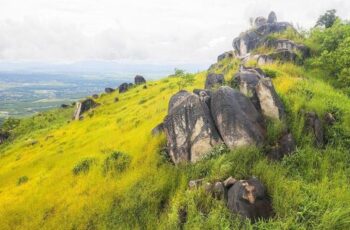Ad Blocker Detected
Our website is made possible by displaying online advertisements to our visitors. Please consider supporting us by disabling your ad blocker.
Activities such as gong performances, sinus dancing or pounding rice around the communal house in Kon Tum impress visitors.
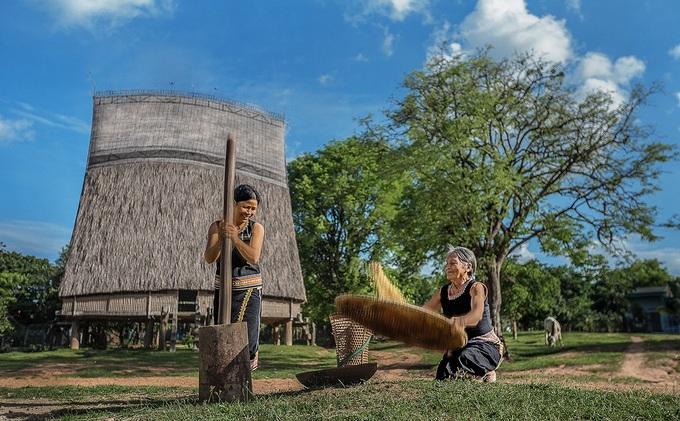
Two Ba Na women are pounding rice and winnowing corn in front of Kon K’ri communal house, located on the Dak Bla river (Dak Ro Wa commune, Kon Tum city).
Communal houses in the Central Highlands are known as the “heart” of the villages. In Kon Tum, communal houses are a typical stilt house style, built entirely of thatch, bamboo, and leaves with a sturdy roof.
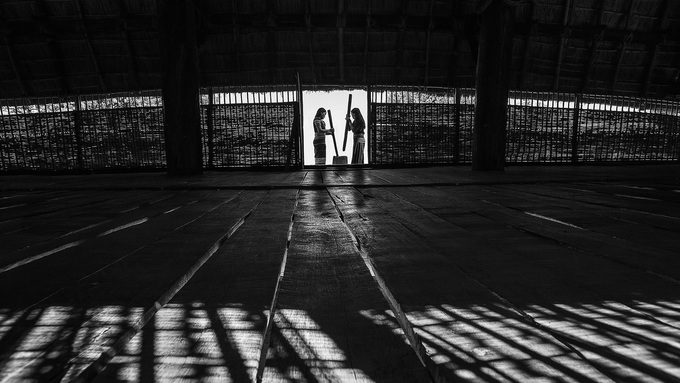
Kon K’ri communal house viewed from inside and out.
Photographer Nguyen Ngoc Thai (often called Thai Bana, living in Kon Tum) said he spent many years recording portraits of people and the beauty of traditional cultural activities around communal houses in Kon Tum.

A village elder is diligently weaving baskets. Materials used for weaving are exploited from nature such as bamboo. The most popular woven products are baskets, baskets, baskets and baskets. This weaving craft helps improve family life and is also taught in the village, preserving a beautiful culture.
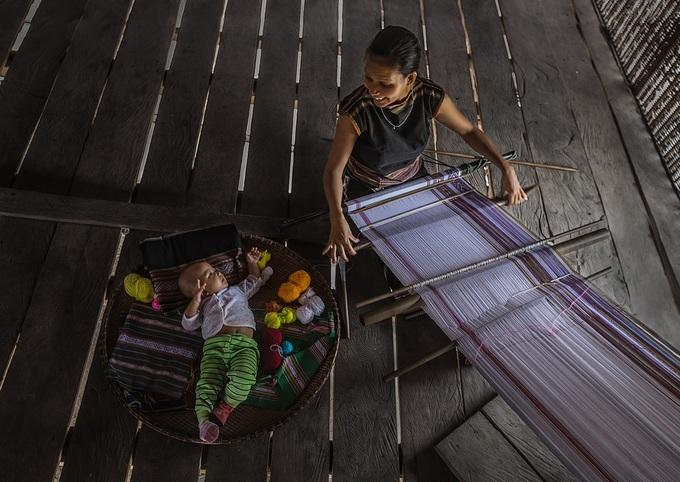
A Ba Na woman takes care of her children and works at the communal house in Kon K’ri village. For the Central Highlands ethnic people, if men know how to play the guitar and make musical instruments, women can dance beautifully and are good at weaving brocade.
Brocade products from dresses, shirts, loincloths to accessories such as bags, scarves, wallets are not only used in family activities, but also become goods to serve tourists, cultural activities, and entertainment. technology in Kon Tum area.
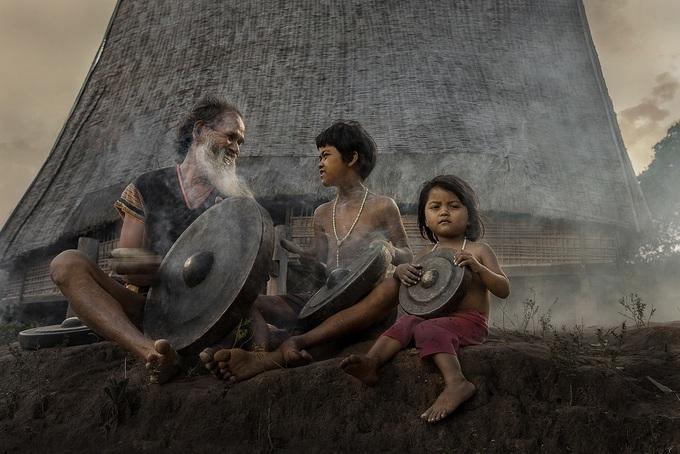
A village elder is instructing two children to use traditional musical instruments. In villages, village elders are people with experience in life and prestige in the family and community.
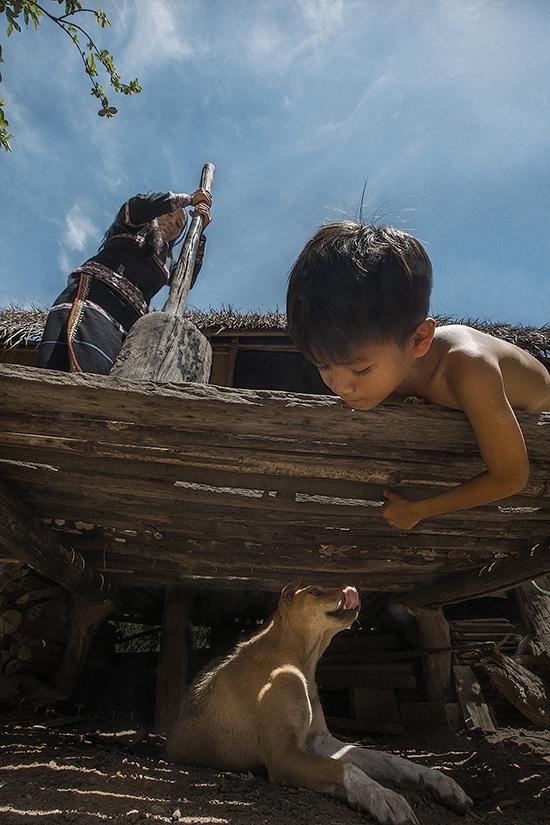
In the area around the communal house, visitors can easily see images of innocent children, sometimes even playing with pets such as dogs and cats.

A village elder is meticulously sculpting wooden folk statues in Kon Klor village (Kon Tum City). In the village, there is Kon Klor communal house, considered one of the largest communal houses in the Central Highlands.
“Wooden statue sculpture is a type of visual art with its own nuances, not only displayed and adorned in communal houses and cultural exchange points in Kon Tum, but also has special meaning for ethnic groups. like Ba Na and Gia Rai when expressing spiritual ideas between living family members and deceased family members,” Mr. Thai Bana said.
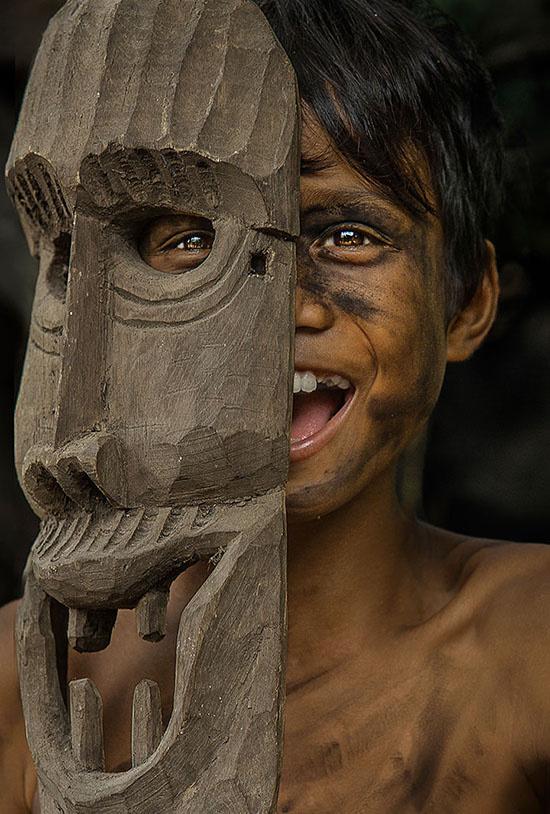
The work “Bana’s Eyes” by Thai Bana won a bronze medal in the portrait category at the 23rd Regional Art Photo Festival of the South Central and Central Highlands regions in 2018.
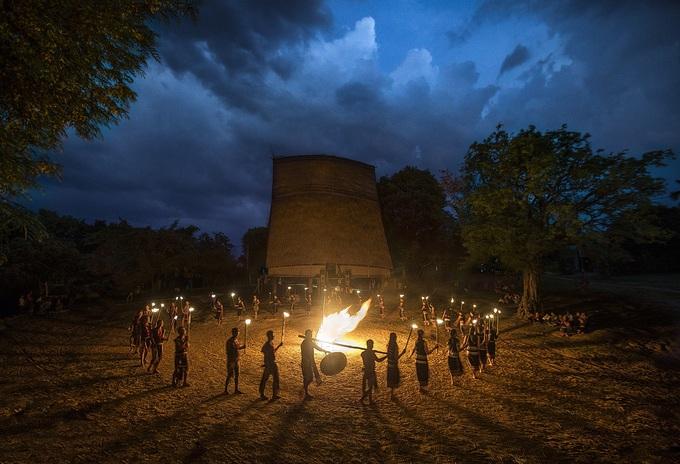
“Gong dance and sinus dance” bustle around the firelight in front of Kon K’ri communal house yard.
“Every time the sound of gongs and gongs resounds in festivals or cultural activities, villagers regardless of old or young, girls and boys hold hands and step rhythmically with the rhythm of the sinus rhythm, making the atmosphere jubilant and attractive. traveler,” Mr. Thai Bana shared.

Kon Gu communal house (Ngok Wang commune, Dak Ha district, Kon Tum province) under the starry sky.
Currently, the management of communal houses is tightened by the Kon Tum local government because the structures are made of bamboo and thatched with grass, so they easily catch fire, especially in the dry season.

